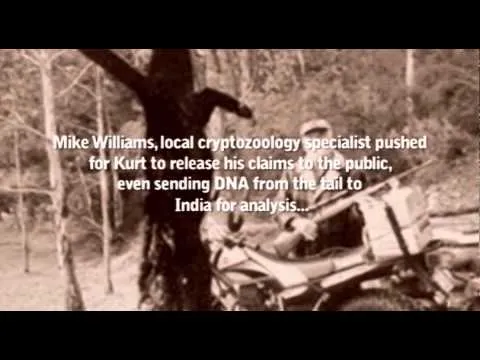It was a dark and stormy night, and the men were lost. They rattled their old van down the beaten track along the side of the sand dunes, where the wild sea roared against the shifting barrier between the water and the valley beyond. The moon rose toward the east, a watcher over men and beasts. They had taken the long way to the camp where the woman and children waited, unable to cross because the old bridge was closed to traffic and impassable. It was then they saw it, its black fur sleek in the moonlight and its haunches muscular and distinctly feline, before it slithered into the teatrees and became the night once more. Both men looked at each other and immediately knew what the other was thinking: they had just seen the black panther of the Otways.
Except, in Australia, there are no black panthers.
Whilst sounding like an old folk tale, the above is a true story, and I know because the two men were my husband and brother in law. They arrived back at camp like two boys for whom Christmas had come early. They were so convinced that they were willing to talk to a local reporter about it. It was only after time had passed that they began to doubt themselves. Was it a black swamp wallaby they had seen? This has certainly been a theory, as the wallaby does have a black tail. But Jamie said it slinked - and that's not how you describe the erratic leap of a wallaby escaping headlights.
It certainly doesnt fit the descriptions given by hundreds of people who have spied panthers throughout Victoria:
- “He said it was definitely not a feral cat, it was jet black, really big, with really thick tail,”
- “They were piercing fluorescent, greeny-yellow eyes. They were evil eyes, they were very, very scary,”
- “It was as black as black and it had a big black bushy tail.”
- 'It was black, it was long, it was quick'
- I thought it was a cat was because of its tail, which was kind of curled, S-shaped. It had a stubby end and was the same thickness its full length
- “The size of the thing was big. We thought the tail was at least a metre long.
There are hundreds of sightings of the black cats of the Otways, and you can read even more of them here http://www.paulclacher.com.au/witnesses.htm. These stories go back a hundred years, and the sightings are not decreasing over time, as you would expect from stories that are founded in folklore (how many stories do you hear about bunyips or fairies, for example) but increasing, suggesting that either we're caught up in some kind of mass hysteria, or that as population increases, we're just more likely to spot them because they are there after all.
Theory 1: Cats Gone Feral
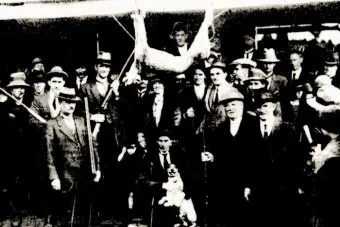
Men In Victoria with the Body of Dead Puma escaped from the circus: 1924
Some believe that panther sightings are merely big cats gone feral. The one pictured below is about 6 foot from nose to the tip of the tail and the longest domestic cat on record is only 121.9 cm from head to tail.
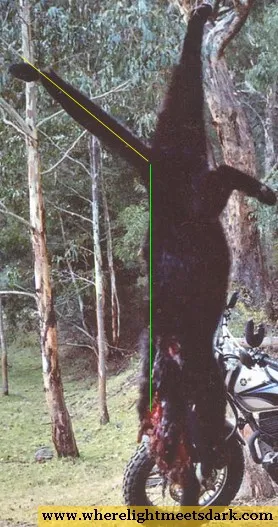
Kurt Engel shot this cat in Gippsland, 2005
Theory 2: Thylacoleo carnifex, Australia's Marsupial Lion
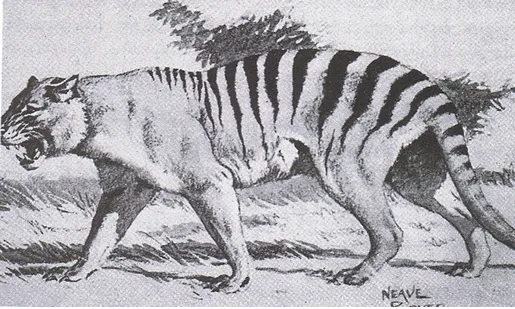
This huge cat was officially extinct 46,000 years ago, but he turns up in cave paintings much later than that, when most global megafauna died out due about 10,000 years ago. Yet many argue that phantom cat sightings are actually this marsupial line. Take this 1920 report, for example:
and, amongst other reports, nearly a hundred years later, wondering about a dead animal seen on the side of the road:
Whilst this isn't a black panther, it's still a valid theory to support the existence of big cats in this country. What I don't quite understand, however, is why they haven't attacked humans. They were known to be shy and hunt at night, but they're also known to be incredible killing machines. Have they only stuck to livestock because they are shy? I can understand however, that they may be genetically 'morphed' into something sleeker and blacker than it's original form, as the depiction below suggests.The descriptions of the colour of phantom cats do vary - the Otways panther is undoubtedly black, but spotted all over Australia, they are described as brown and black, to having stripes, brindle, spotted, dark or light fur. That's not people unable to agree - that's area variation.
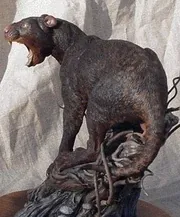
The other intriguing idea that came from this story is that they used to be tree dwelling - is that where the story of the Australian drop bear came from, from the Aboriginal story of the yarri that would drop from trees and eviscerate hunters?
Some also theorise that when they're spotted in a place, they're quickly exterminated by a government who worries about tourism and aren't seen again. I think they're more likely to crow about it, to be honest - look how great we are at protecting our people! - and that perhaps they aren't seen because they've been spooked by people and have got pretty good at hiding from us.
Theory 3: Escaped from Private Collections
Australia has introduced many species that have had an impact on the environment here, from cane toads to rabbits. It's not too far fetched to think that the big cats of the Otways, or anywhere in Australia, could be descendants of an escaped exotic creature or two. The government report into big cats in Victoria found that there were thousands 'community cryptozoological groups and
individuals' whose files they had to sift through. Furthermore, others believe they could be escaped military mascots as ships were returning from Africa and Europe with all sorts of beasts.
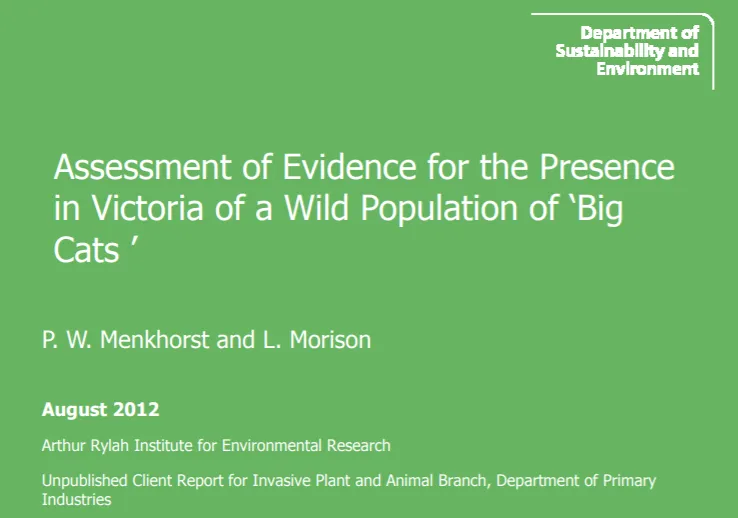
The DSE Report into Big Cats in Victoria
The report suggests that despite being called a panther in Victoria, given the observations of attacked livestock and the given descriptions, it was more like to be a leopard, a puma (or cougar or mountain lion) or a jaguar:
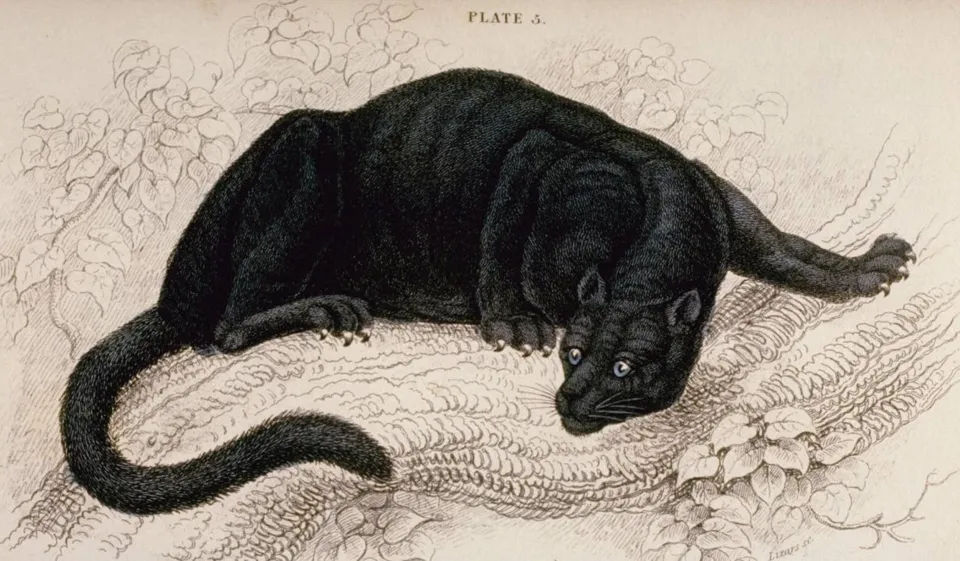
Pumas are also known to be two tonal with paler underparts, which may account for some descriptions of the 'panthers' of the Otways
The report then looks at the still from the following video, and suggests that from the shape of it's head, it's more likely to be a domestic cat because of the ears 'placed high on the head, proportionally short tail, skinny forelimbs, narrow neck and the shape of it's head', which fits the first theory - cat sightings are just that, though big moggies at that!
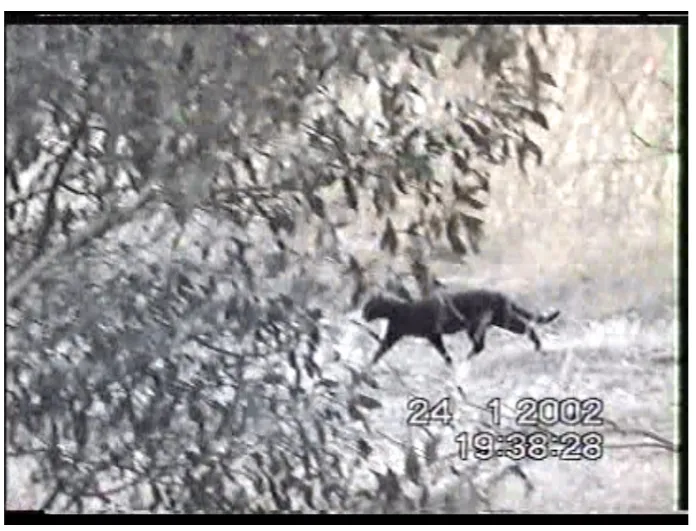
The study looked extensively at evidence for big cats and lamented the lack of primary evidence. Why, if prey was increasing with the introduction of deer to Victoria in the 1990's, were they not spotted? Why were they not picked up by motion cameras? Why, despite extensive testing of killed livestock, did they not find big cat scats, fur and other DNA?
However, in 1991 they did find DNA, in faecal matter in Winchelsea, Victoria, on the edge of the Otways. It was sent to experts who analysed the scats and found that they had a similiar odor to the zoo black leopard, who was provided for comparision. Finding four black hairs in the scat, they were compared to samples from the zoo leopard and a puma, concluding it's features were remarkably similar. They were sent to a second expert, who condluded that they were from a cat, yet, upon being told that they were extracted from large faeces with a very strong odour, he couldn't exclude that it might be from a 'panther like' animal. In 2000, they were subjected to molecular analysis by Dr Stephen Frankenberg of the Department of Zoology at La Trobe University. He found that the region of mitochondrial DNA he tested was exactly the same as the sequence from the leopard, except for one position, which he concluded was due to 'sequence polymorphism within the species'. They didn't publish because they were worried about a very small possibility of contamination - one of the experts had leopard hairs in her workshop.
The report concludes as we must - it's hard to fathom that there's no other evidence for the big cats in Victoria bar this DNA evidence, folklore, and some behaviors that seem outside the realm of feral cats. Yet that's enough, for many of us, to keep believing that the creatures exist. Just because the 'hard' evidence hasn't accumulated yet, doesn't mean they don't exist. The report recommended that further studies of the 'big cat' issue needed further governmental investigation and work needed to be done on gaining primary evidence such as DNA fingerprinting of livestock carcasses and equipping officers to do so, as well as enlisting vets to help undertake forensic examination of the carcasses.
If you are interested, there is a report of a panther below in a short documentary. It's interesting to us, because it's right where we live. Will the phantom black cat of the Otways creep by our property one day? Will it slink past the fenceline in the moonlight?
What is so beautiful about the possibility of the blank panther is that our bush could possibly support a creature like that, and it has evaded us. Whilst we categorize, photograph, record and analyse every beast we find, this one evades us, and there is something I can champion in that. I don't want it to be caught and held up as a trophy, measured and sliced open. I want it to hide in the forests and survive, away from man's meddling and cruelty.
I cannot help but be reminded of the last thylacine, pacing her cage:

Vivian Smith, in her poem 'The Last Thylacine' captures this sorrowfulness at the extinction of an animal now lost to us in time.
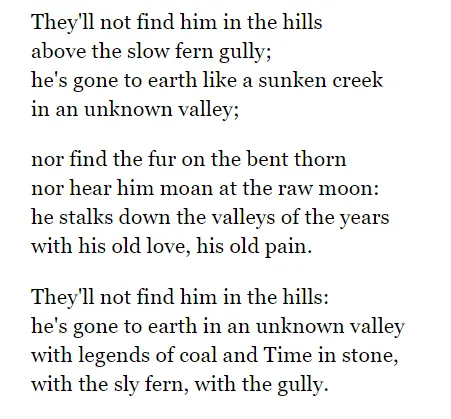
I hope they don't find our Otways black panther. I hope he slinks in valleys unknown to us, hidden by sly ferns in wooded gullies. I hope he steals our sheep and our cows, taking his fill and carrying meat back to his cubs so that they may thrive in their hidden places. He has captured our imagination, but we don't want to capture him, because we'll lose something more than that - we will lose the mystery that captivates us, and we'll lose the wildness on the edges of a landscape we love.
